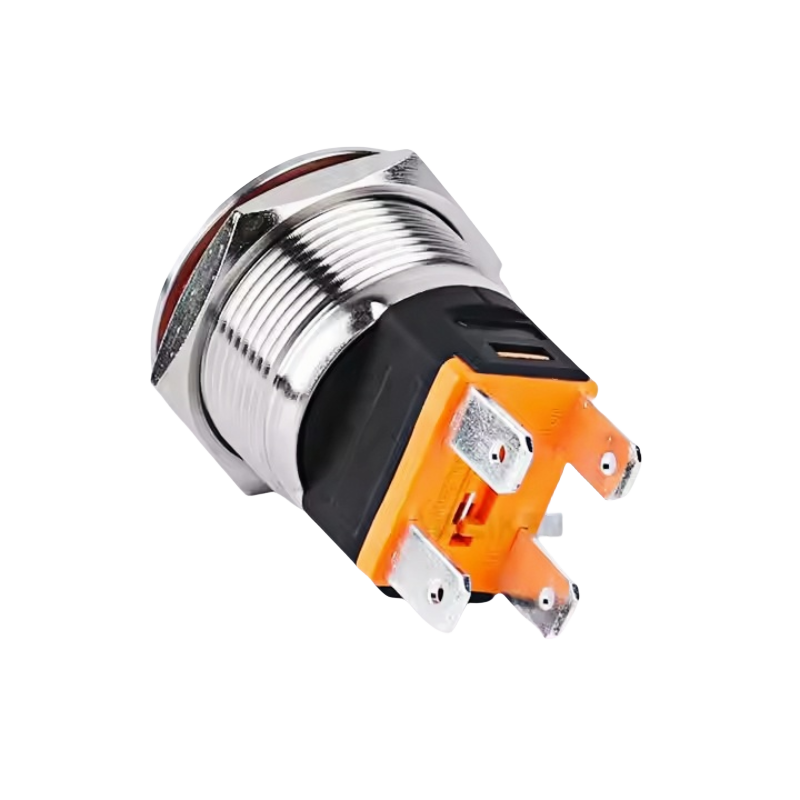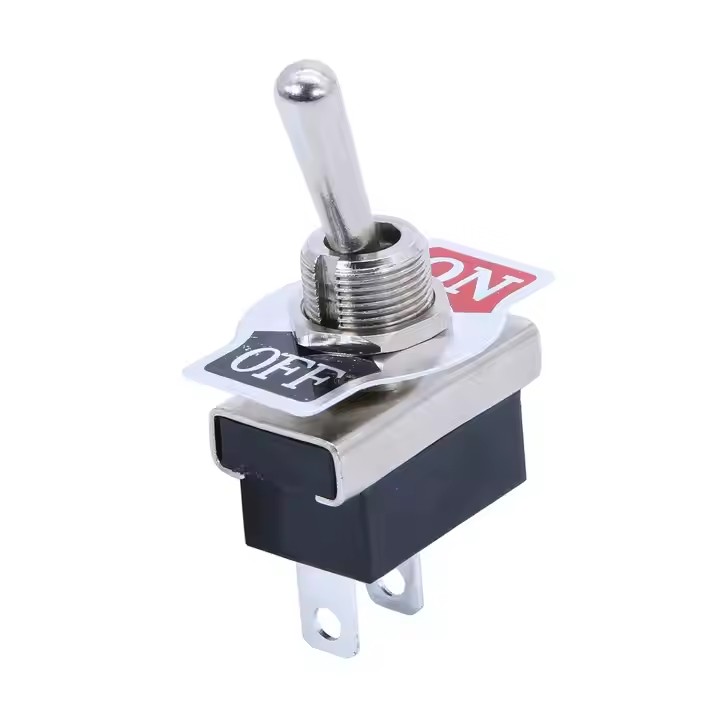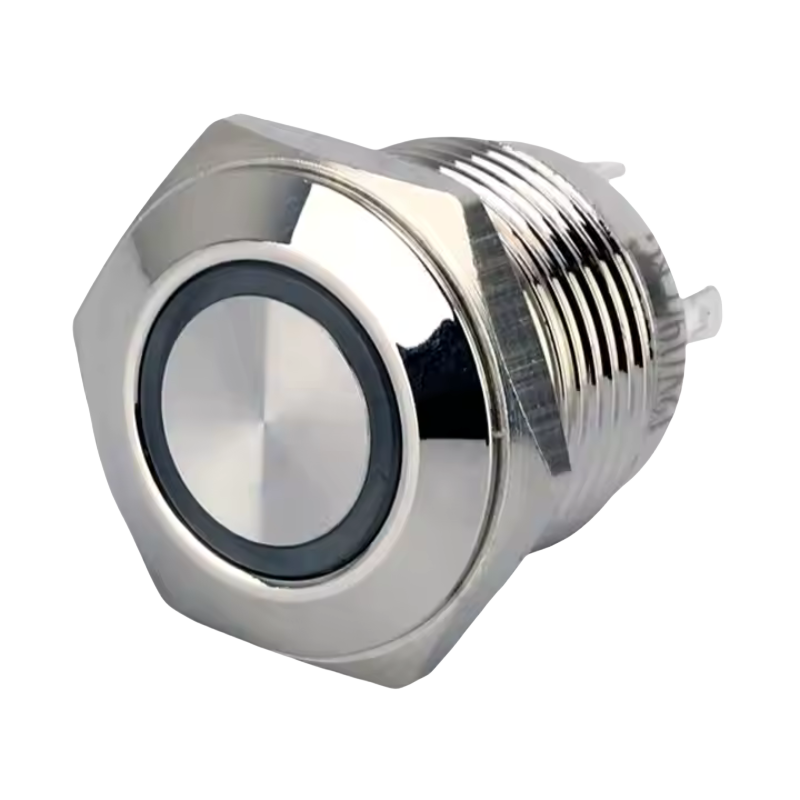In the field of electrical and electronic control systems, switches are essential components that allow users to manage the flow of electricity. Among the many types of switches available, metal push button switches stand out for their durability, reliability, and professional appearance.
These switches are widely used in industrial machinery, automotive panels, medical equipment, security systems, and more. Whether you’re operating a factory machine, turning on a light in a vehicle, or managing a piece of industrial equipment, there’s a good chance you’ve interacted with a metal push button switch.
This article provides a comprehensive overview of what metal push button switches are, how they work, the different types available, and where they are commonly applied.
What Is a Metal Push Button Switch?
A metal push button switch is an electrical switching device housed in a metal casing, typically made from materials such as brass, aluminum, or stainless steel. It features a raised button that can be pressed to activate or deactivate an electrical circuit.
Compared to plastic alternatives, metal push button switches offer:
- Greater mechanical strength
- Higher resistance to heat and chemical exposure
- A more professional and durable appearance
They are designed for long-term use and are often chosen for applications where performance under stress or frequent operation is required.
How Do Metal Push Button Switches Work?
At their core, metal push button switches function by completing or interrupting an electrical circuit when the button is pressed. Depending on the design, these switches can be either momentary or latching:
Momentary Push Button Switch
This type activates only while the button is being pressed. Once released, it returns to its original position. Momentary switches come in two main forms:
- Normally Open (NO): The circuit remains open until the button is pressed.
- Normally Closed (NC): The circuit remains closed until the button is pressed.
These are often used for temporary functions such as emergency stops, reset buttons, or start triggers.
Latching (Self-Locking) Push Button Switch
This switch toggles between ON and OFF states each time the button is pressed. It remains in the selected state until pressed again. These are ideal for applications requiring continuous operation without holding the button down.
Key Components of a Metal Push Button Switch
To understand the durability and functionality of these switches, consider their typical structure:
Metal Housing
Usually constructed from corrosion-resistant metals like stainless steel or brass, the housing offers structural support and protection against physical damage.
Button Cap
The visible part of the switch that users press. It may come in various shapes — round, square, or rectangular — and sometimes includes color-coded caps for visual identification.
Actuator Mechanism
Located inside the switch, the actuator moves up and down when the button is pressed, activating internal contacts.
Terminals / Pins
These are the electrical connection points where wires are attached. Common configurations include 2-pin, 3-pin, and 6-pin setups depending on the switch function.
Internal Contacts
Made from conductive materials such as silver or gold-plated alloys, these parts open or close the circuit based on the switch action.
Spring System
Provides tactile feedback and ensures the button returns to its original position after being pressed.
Some models also feature LED indicators, which illuminate the button to show whether the connected device is active or not.
Types of Metal Push Button Switches
Metal push button switches are available in various configurations to meet different application needs. The most common types include:
Momentary vs. Latching
Momentary switches return to their default state once released, while latching switches remain in the activated position until pressed again.
Normally Open (NO) vs. Normally Closed (NC)
- NO Switch: Completes the circuit only when pressed.
- NC Switch: Keeps the circuit closed until pressed, at which point it opens.
Illuminated vs. Non-Illuminated
Illuminated switches have built-in LED lights to indicate the switch status, especially useful in low-light environments or safety-critical applications.
Flush Mount vs. Raised Button
- Flush mount: The button sits level with the panel when unpressed, offering a sleek look.
- Raised button: The button protrudes slightly, making it easier to locate by touch.
Waterproof & Dustproof Models
Available with IP ratings such as IP65, IP67, or even IP68, these switches are designed for use in harsh environments including outdoor installations, marine applications, and food processing facilities.
Multi-Function Push Buttons
Some advanced models combine multiple switching functions into one unit, allowing for complex operations from a single control point.
Applications of Metal Push Button Switches
Due to their robustness and versatility, metal push button switches are found across a wide range of industries and applications:
Industrial Machinery
Used in control panels, emergency stop systems, conveyor belts, and CNC machines where reliable operation under heavy usage is essential.
Automotive Systems
Found in car dashboards, truck control panels, and off-road vehicles for managing lights, wipers, winches, and auxiliary power outlets.
Medical Equipment
Critical in diagnostic tools, patient monitors, and surgical instruments where precision and sterility are vital.
Security and Access Control
Employed in intercoms, alarm systems, door entry panels, and biometric access stations.
Marine and Outdoor Equipment
Thanks to waterproof versions, these switches are ideal for boats, yachts, and outdoor lighting systems exposed to moisture and saltwater.
Home Automation and Smart Devices
Used in smart home panels, thermostats, and high-end audio/video equipment for a premium user interface.
DIY and Custom Electronics Projects
Popular among hobbyists and engineers for custom-built robotics, model trains, and electronics prototypes.

Why Choose a Metal Push Button Switch Over Other Types?
There are several reasons why designers and engineers choose metal push button switches over alternatives such as plastic push buttons, toggle switches, or membrane switches.
Durability
Metal construction makes these switches highly resistant to impact, vibration, and environmental wear.
Long Lifespan
High-quality models are rated for hundreds of thousands of cycles, ensuring long-term reliability.
Professional Appearance
The metallic finish gives a polished, industrial look suitable for commercial and high-end consumer products.
Tactile Feedback
The spring-loaded mechanism offers clear physical feedback, helping users know the switch has been activated.
Customization Options
Available in various sizes (commonly 12mm, 16mm, 19mm, and 22mm), colors, and illumination options.
Environmental Resistance
With proper sealing, these switches can withstand dust, moisture, oil, and extreme temperatures.
How to Choose the Right Metal Push Button Switch
Selecting the right metal push button switch depends on your specific application requirements. Here are key factors to consider:
Voltage and Current Rating
Ensure the switch can handle the voltage and amperage of your system. Typical ratings range from 3V to 250V, with current capacities from 0.5A to 10A or higher.
Environmental Conditions
If the switch will be used outdoors or in wet/dirty environments, choose a sealed model with an appropriate IP rating.
Illumination Needs
Decide whether you need an illuminated version with LED indicators for better visibility.
Switch Type
Choose between momentary, latching, NO, NC, or dual-function models based on your control needs.
Size and Mounting Style
Common sizes are 12mm, 16mm, 19mm, and 22mm. Confirm the panel cutout size matches the switch diameter.
Terminal Configuration
Determine the number of terminals needed (2-pin, 3-pin, 6-pin, etc.) based on wiring complexity and functionality.
Color and Design
Many switches are available in red, green, blue, black, or white, and some offer engraved symbols or markings.
Installation Tips for Metal Push Button Switches
Proper installation is crucial for optimal performance and safety. Here are some best practices:
- Turn Off Power Before Installation
Always disconnect the power supply before connecting or replacing a switch to avoid short circuits or electric shock. - Use the Correct Tools
Ensure you have the right screwdrivers, wire strippers, and crimping tools to make secure connections. - Follow Wiring Diagrams
Refer to the manufacturer’s instructions or datasheet to ensure correct terminal connections. - Secure All Connections
Make sure wires are tightly fastened and insulated to prevent loose contacts or arcing. - Test the Switch
After installation, test the switch to confirm it operates correctly and that any indicator lights turn on/off as expected. - Check Environmental Sealing
For outdoor or wet-area installations, verify that the switch housing is fully sealed and protected from moisture.




